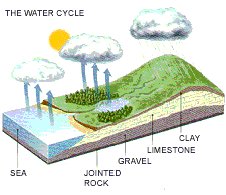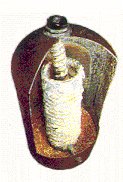Q
|
What is hard water?
|
A
|
Hard water is water that contains dissolved chalk, lime and other minerals. Rainwater is naturally soft, but as it percolates through chalk and limestone it dissolves and collects these minerals. Rainwater, which falls on hard rock, remains naturally soft.
|
|

|
|
The hardness of the supply of mains water to your home is dependant on where you live and the source (river or ground water) of your mains water supply.
|
| | |
Q
|
What are the effects of hard water?
|
A
|
Scale, scum and tidemarks around the baths and basins. The minerals contained in the hard water settle out as an unsightly deposit of hardness scale whenever the water is heated, or when cold standing water evaporates.
Examples of this are: Unsightly white marks, stains and scale on sinks, baths, toilet bowls and around the base of taps, Blocked shower heads, Scale deposits on all heating elements, Clogging of pipework and premature failure of water heaters..
|
|

|
|
Water hardness also makes it difficult to get a good lather; so more soap is required for washing. Even after washing, clothes can be left grey and dingy, and dishes and glasses dull or smeared.
|
| | |
Q
|
How can I find out if my water is hard?
|
A
|
Please refer to the map below and read on:
|
|
|
|
|
Soft
to various levels of hardness
|
|
.
|
|
|
|
|
|
Soft
to moderately soft
|
|
.
|
|
|
|
|
|
Slightly
hard
|
|
.
|
|
|
|
|
|
Hard
to very hard
|
|
.
|
|
|
|

|
|
Q
|
Which areas of the United Kingdom have hard water?
|
A
|
Generally speaking, hard water is present in 60%nof the country (especially in Eastern, Central and Southern areas of England) and to varying degrees in the rest of the United Kingdom. The water for some Northern cities is supplied from Naturally soft water reservoirs in Wales and the Lake District.
Scotland:
Supplies range from soft to various levels of hardness, with the majority being in the soft to moderately soft category.
Northern Ireland:
Northern division - soft to moderately soft
Eastern division – soft to slightly hard
Southern division – soft to very hard
Western division – soft to moderately hard.
Note: Hardness can also be measured in ppm (parts per million).
The mg/l and ppm figures are the same as 1 mg/l = 1ppm.
Other ways of measuring hardness and some equivalent values are shown in the table below.
|
| | |
|
|
Mg/l or ppm as calcium carbonate
|
Mg/l of calcium
|
Degree of Clark or English
|
Degrees German
|
Degrees French
|
|
100
|
40
|
7
|
5.6
|
10
|
|
200
|
80
|
14
|
11.2
|
20
|
|
300
|
120
|
21
|
16.8
|
30
|
|
400
|
160
|
28
|
22.4
|
40
|
|
| | |
|
Due to the complexity of water supply systems, the map and notes can only give an indication of the likely hardness of the water in different parts of the UK. Precise information on the hardness of individual supplies is available from local water suppliers’ customer services units or helplines. |
| | |









